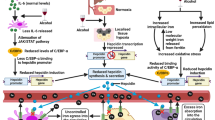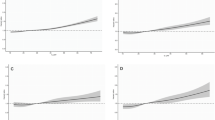Abstract
Objective
Mass carbon disulfide (CS2) poisoning was reported at a viscose rayon factory in Korea. We evaluated the association between CS2 poisoning and the prevalence of metabolic syndrome.
Methods
The cases (n = 170) involved CS2-poisoned subjects, who participated in a health examination conducted at a hospital in Korea in 2005. The controls (n = 170) were selected randomly from the participants in the third Korean National Health and Nutrition Examination Survey. Metabolic syndrome was defined as having at least three of following metabolic abnormalities: abdominal obesity, elevated triglyceride, reduced high-density lipoprotein cholesterol, elevated blood pressure, and elevated fasting glucose levels.
Results
After adjusting for covariates (age, gender, education, marital status, alcohol consumption, and smoking), CS2-poisoned subjects had an increased risk of metabolic syndrome (prevalence ratio 1.57, 95% CI 1.25–1.98).
Conclusions
The findings suggest that CS2 poisoning may increase the risk of metabolic syndrome.
Similar content being viewed by others
References
American Conference of Governmental Industrial Hygienists (1999) 1999 TLVs and BEIs. American Conference of Governmental Industrial Hygienists, Cincinnati, OH
Cho SI, Jhun HJ, Yim SH, Lee YK, Lee SY, Kim MJ (2005) Health evaluation of Korean carbon disulfide poisoned subjects after exposure has ceased. Institute of Work, Environment, and Health, Seoul
Drexler H, Ulm K, Hardt R, Hubmann M, Göen T, Lang E et al (1996) Carbon disulphide. IV. Cardiovascular function in workers in the viscose industry. Int Arch Occup Environ Health 69:27–32. doi:10.1007/BF02630735
Ebrahim S, Smith GD (1998) Lowering blood pressure: a systematic review of sustained effects of non-pharmacological interventions. J Public Health Med 20:441–448
Evaluation Expert Panel on Detection and Treatment of High Blood Cholesterol in Adults (2001) Executive summary of the third report of the National Cholesterol Education Program (NCEP) Expert Panel on detection, evaluation, and treatment of high blood cholesterol in adults (Adult Treatment Panel III). JAMA 285:2486–2497. doi:10.1001/jama.285.19.2486
Grundy SM, Cleeman JI, Daniels SR, Donato KA, Eckel RH, Franklin BA et al (2005) Diagnosis and management of the metabolic syndrome: an american heart association/national heart, lung, and blood institute scientific statement: executive summary. Circulation 112:e285–e290. doi:10.1161/CIRCULATIONAHA.105.169405
Howard BV, Ruotolo G, Robbins DC (2003) Obesity and dyslipidemia. Endocrinol Metab Clin North Am 32:855–867. doi:10.1016/S0889-8529(03)00073-2
Jhun HJ, Yim SH, Kim R, Paek D (2003) Heart-rate variability of carbon disulfide-poisoned subjects in Korea. Int Arch Occup Environ Health 76:156–160
Jhun HJ, Cho SI, Kim MJ, Sung J (2007) Electrocardiographic features of Korean carbon disulfide poisoned subjects after discontinuation of exposure. Int Arch Occup Environ Health 80:547–551. doi:10.1007/s00420-006-0162-z
Kahn BB, Flier JS (2000) Obesity and insulin resistance. J Clin Invest 106:473–481. doi:10.1172/JCI10842
Kim DS, Kim SD, Cha CW (1993) A study of the peripheral neuropathy among the workers exposed to carbon disulfide. Korean J Prev Med 26:282–292
Korea Center for Disease Control and Prevention (2005) Progression report of health examination in the third Korea National Health and Nutrition Examination Survey. Korea Center for Disease Control and Prevention, Seoul
Kotseva K, Braeckman L, De Bacquer D, Bulat P, Vanhoorne M (2001) Cardiovascular effects in viscose rayon workers exposed to carbon disulfide. Int J Occup Environ Health 7:7–13
Lee EI, Kim SD, Kim HJ, Kim KJ, Yum YT (1996) Carbon disulfide poisoning in Korean with social and historical background. J Occup Health 38:155–161. doi:10.1539/joh.38.155
Lee WY, Park JS, Noh SY, Rhee EJ, Kim SW, Zimmet PZ (2004) Prevalence of the metabolic syndrome among 40,698 Korean metropolitan subjects. Diabetes Res Clin Pract 65:143–149. doi:10.1016/j.diabres.2003.12.007
Luo JC, Chang HY, Chang SJ, Chou TC, Chen CJ, Shih TS et al (2003) Elevated triglyceride and decreased high density lipoprotein level in carbon disulfide workers in Taiwan. J Occup Environ Med 45:73–78. doi:10.1097/00043764-200301000-00015
Miller M (2003) Raising an isolated low HDL-C level: why, how, and when? Cleve Clin J Med 70:553–560
Park HS, Oh SW, Cho SI, Choi WH, Kim YS (2004) The metabolic syndrome and associated lifestyle factors among South Korean adults. Int J Epidemiol 33:328–336. doi:10.1093/ije/dyh032
Reaven GM (1995) Pathophysiology of insulin resistance in human disease. Physiol Rev 75:473–486
Spiegelman D, Hertzmark E (2005) Easy SAS calculations for risk or prevalence ratios and differences. Am J Epidemiol 162:199–200. doi:10.1093/aje/kwi188
Sweetnam PM, Taylor SW, Elwood PC (1987) Exposure to carbon disulphide and ischaemic heart disease in a viscose rayon factory. Br J Ind Med 44:220–227
Takebayashi T, Nishiwaki Y, Uemura T, Nakashima H, Nomiyama T, Sakurai H et al (2004) A six year follow-up study of the subclinical effects of carbon disulphide exposure on the cardiovascular system. Occup Environ Med 61:127–134. doi:10.1136/oem.2002.006858
Thompson ML, Myers JE, Kriebel D (1998) Prevalence odds ratio or prevalence ratio in the analysis of cross sectional data: what is to be done? Occup Environ Med 55:272–277
Vanhoorne M, De Bacquer D, De Backer G (1992) Epidemiological study of the cardiovascular effects of carbon disulphide. Int J Epidemiol 21:745–752. doi:10.1093/ije/21.4.745
Working Group of Epidemiological Investigation in the School of Public Health, Seoul National University (1992) Epidemiological investigation of CS2 poisoning. School of Public Health, Seoul National University, Seoul
World Health Organization (2002) Concise international chemical assessment document 46: carbon disulfide. World Health Organization, Geneva
Acknowledgments
This study was supported by the Wonjin Foundation.
Conflict of interest statement
None declared.
Author information
Authors and Affiliations
Corresponding author
Rights and permissions
About this article
Cite this article
Jhun, HJ., Lee, SY., Yim, SH. et al. Metabolic syndrome in carbon disulfide-poisoned subjects in Korea: does chemical poisoning induce metabolic syndrome?. Int Arch Occup Environ Health 82, 827–832 (2009). https://doi.org/10.1007/s00420-008-0363-8
Received:
Accepted:
Published:
Issue Date:
DOI: https://doi.org/10.1007/s00420-008-0363-8




